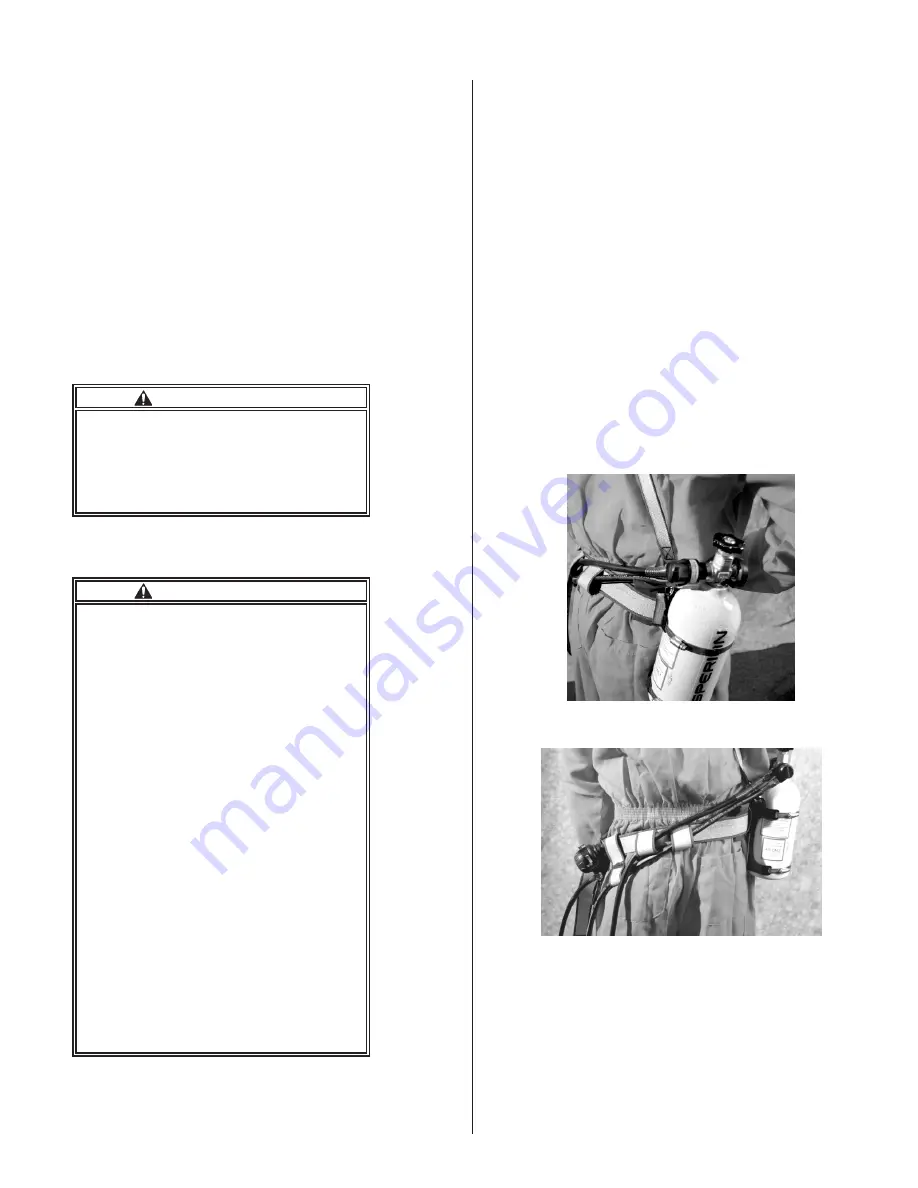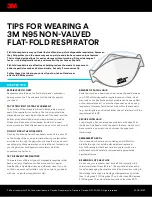
7
Panther HIP-PAC
4. The air supply connection using the 1/4 inch male-
to-male adapter illustrated in Method 2 is also ap-
proved for use with Methods 3 and 4.
a. Method 1 is preferred when only one length of
hose is required, since it allows the hose to be dis-
connected from the air supply.
b. Method 3 is preferred when multiple lengths of
hose (maximum of three) are required, eliminating
the cost of quick-disconnect couplers at the hose
junctions.
5. Pressurize and check for leaks with a bubble-type
leak detector. If leaks are detected:
a. Disassemble and repeat steps 3 through 5.
b. If the leaks persist, remove the hose from ser
-
vice and have repairs made by a SPERIAN-certified
technician.
WARNING
Always verify that the swivel nut gas
-
kets are in place and undamaged before
assembly. Missing or damaged swivel
nut gaskets may allow contaminants to
leak into the system causing illness or
death.
C. Donning
WARNING
• Always don, remove, and fit check the
respirator in a safe, uncontaminated
area.
• The regulator must be attached to the
Panther HIP-PAC air cylinder before
connecting the air line hose to the air
supply. Using the supplied air line with-
out the regulator being attached to the
cylinder could result in loss of air, caus
-
ing illness or death.
• Verify that the air cylinder valve is
turned off before connecting to the air
supply. Using the Panther HIP-PAC with
the air cylinder turned on while connect-
ed to the air supply will cause loss of air
in the cylinder, resulting in reduced es-
cape time in case of an emergency.
• Always disengage the regulator from
the facepiece and return it to the waist
belt-mounted receiver when not in use.
This will prevent contaminants from
entering the regulator outlet port. Dirt,
dust, and water may enter the regulator,
causing it to malfunction.
• Failure to comply with this Warning
may lead to serious personal injury, se-
rious illness, or death.
1. Verify that the air cylinder valve is turned off.
2. Verify that the bypass is in the OFF position and
that the cylinder gauge reads full.
3. Depress the shutoff button on the second stage
regulator.
4. Ensure that the waist belt and hip pad (if used) are
properly positioned on the tank mounting bracket belt
loop. See Figure 3.
5. Insert the air line hose through the first waist belt
loop on the back of the waist belt and the restraint
sleeve located on the waist belt. See Figure 4.
6. Route the second stage hose through the second
loop on the back of the waist belt. Position the second
stage hose so that it routes under your left arm. (If the
hose is too tight, adjust the cylinder nearer the small
of your back.)
NOTE
The following steps 7-10 do not apply to
the 5-minute and 10-minute nylon harness
assembly, P/N 975230.
Figure 3. Waist Belt and Hip Pad Position
Figure 4. Routing of Hoses
7. Ensure that the regulator receiver is attached to the
waist belt just behind the snap hook.
8. Ensure that the waist belt is laced properly through
the D-ring slide and the snap hook. See Figure 5.

































